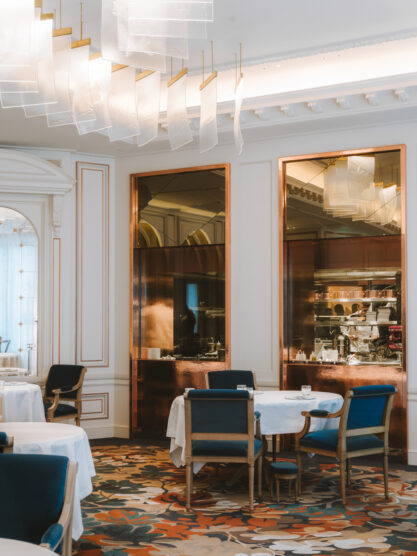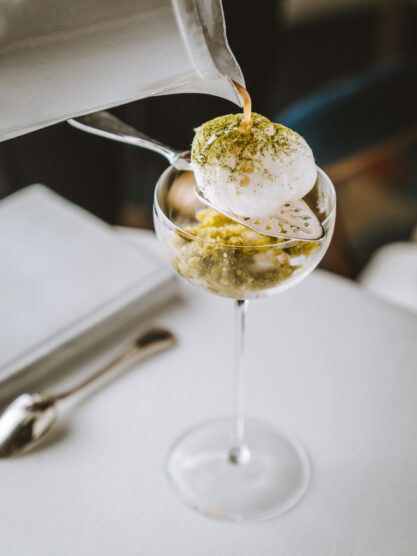Restaurant Espadon: A New Chapter for Ritz Paris
The iconic hotel has opened the highly anticipated reopening of its gastronomic restaurant.

After the Espadon closed in 2020, and Nicolas Sale departed in March 2021, the doors remained firmly shut long after Paris’s palace hotels had reopened. But the wait has paid off, with the newly appointed chef Eugénie Béziat making a strong entrance on the Parisian dining scene with a daring, flavourful cuisine inspired by two continents.
After growing up in Africa, with summers spent in Provence thanks to her French mother, Béziat moved to Toulouse to study literature before the kitchen called to her. She then trained in the Michelin-starred kitchens of chefs Michel Guérard and Michel Sarran before reviving La Flibuste in Villeneuve-Loubet, where she gained her first star. Coincidentally, Villeneuve-Loubet is the birthplace of renowned French chef Auguste Escoffier.


Now, at the Ritz Paris, her highly personal cuisine is a clear standout among the still often classic French menus. “My signature could be defined as French cuisine that’s constantly searching for tastes and smells from faraway places,” Béziat says. “It might be reminiscences of sun-scorched earth, a smoky note, the scent of a mango, or the heady memory of an iced bissap (hibiscus flower) syrup that we always clamoured for after school.”

The collection of amuse-bouches allows the chef to set the scene for her culinary style while paying homage to the hotel’s history: the rich French butter is infused with ginger, and a bite of smoked swordfish is a small nod to the restaurant’s name, Espadon, chosen by César Ritz’s son, Charles Ritz.
The African-inspired lobster-cassava bissap has quickly become a signature dish, a blend of hibiscus, cassava semolina, samphire, and sea urchin, while the red mullet with carrots and the Mediterranean plant immortelle is a nod to Beziat’s South of France roots. “Immortelle, I love this plant. I love its scent,” she says. More daring is the unusual combination of oyster, brède mafane (paracress), and brousse cheese, which brings together the salty iodic notes of the oyster with the peppery plant and “brousse cheese for gourmet pleasure.”

While each dish feels elegantly understated, the “Houdan chicken worked in the spirit of yassa” comes alongside an onion baked in a clay crust, which is sliced open at the table to release the perfume before returning on the plate. Chef Béziat also isn’t afraid to have fun: the classic Bloody Mary is reimagined as an amuse bouche with gin instead of vodka. The palette cleanser takes inspiration from very Parisian absinthe, with a syrup poured over a puff of sugar on a silver absinthe spoon and into a bright green concoction.

As at Paris’s other palace hotels, which the Ritz isn’t in status but clearly is in everything else, Beziat sources a large percentage of her fruit, herbs, and vegetables from a small urban garden in Saint-Nom-la-Bretèche, around 30 kilometres from the hotel.
Dishes evolve with the seasons, but the spirit of each remains, perhaps sea urchin instead of samphire or radishes in place of tomatoes. Other while African ingredients such as dried hibiscus flower can be used all year round. “I hope they experience a journey, something that takes them out of time a little, maybe takes them out of Paris, out of the Ritz,” Béziat says. “I think we travel when we eat, and when people tell me the cuisine is surprising or crazy, it’s a nice compliment.”




